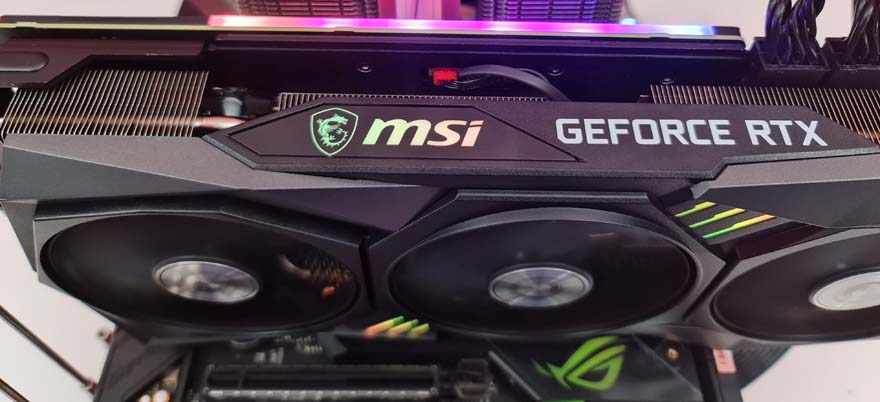MSI Gaming X Trio RTX 3060 Graphics Card Review
Peter Donnell / 4 years ago
A Closer Look
We’ve seen this GPU cooler design on all the RTX 3000 series MSI Gaming X Trio cards, and that is no bad thing, as it’s an awesome look cooler. Furthermore, we know it can deliver excellent performance on the more high-end models it has been featured on, so the RTX 3060 should be fairly easy work for this cooler design.

The card features MSI’s triple-fan design known as “Gaming X Trio”, which are wider than most GPU fans, so they should be able to move a lot more air at lower RPM. You’ll notice the fan blades are joined together in pairs too, which is another effort to help drive air downwards through the heatsink rather than throwing it out to the sides.
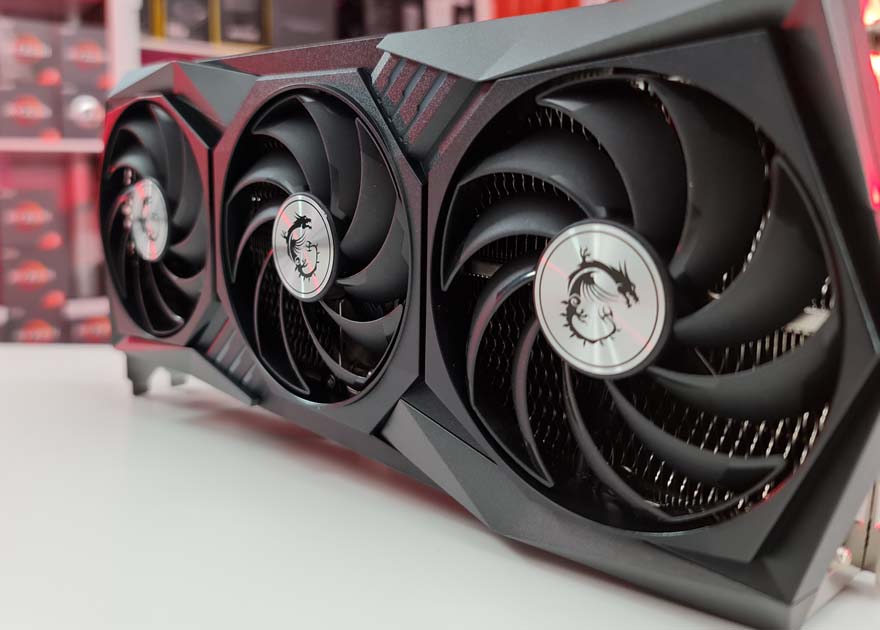
The card is quite thick, clocking in at 2.5 slots deep. As you can see, that space allows for a massive sized heatsink, and even then, the card features a significant number of fins too, so the overall surface area is simply enormous.

Some RTX 3060 cards use a single 8-pin, but MSI feels the need to drive this card with a pair of them. That’s wildly more power than this chipset requires, but it will provide voltage stability and improve overclocking potential too.
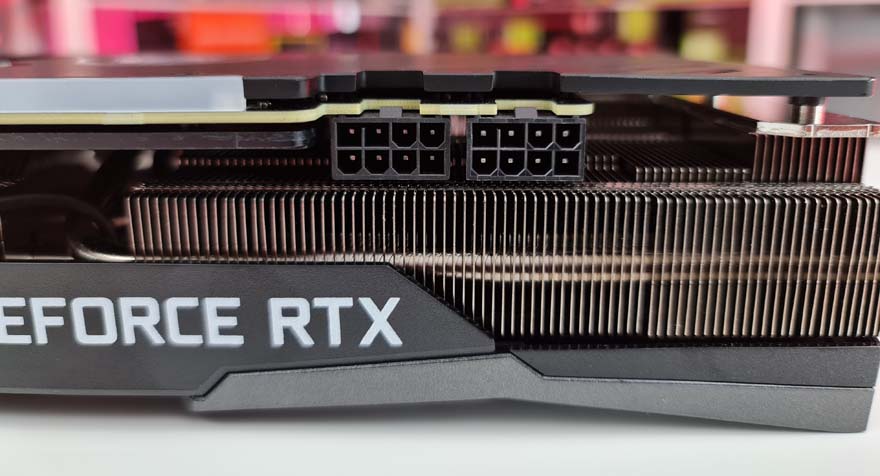
The card is quite heavy thanks to its massive cooler design, and it’s made even cooler and heavier thanks to this stunning backplate.

The backplate is matte black and just looks super cool. However, it does provide passive cooling to the PCB, as well as helping to prevent the card from sagging. It also has some cut-outs towards the back, allowing the back fan to push air straight through the heat sink.
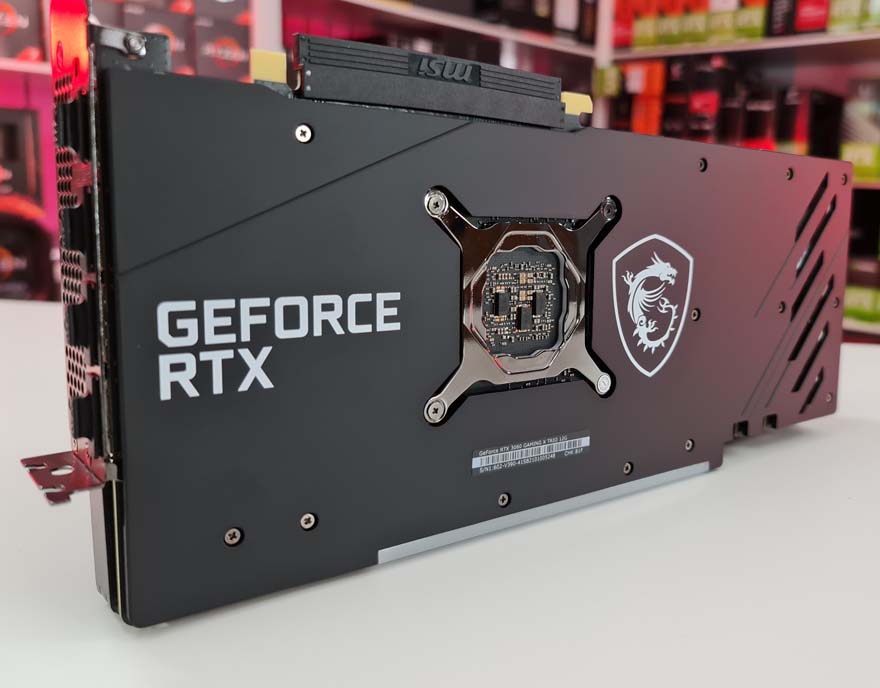
Speaking of heat exhaust. The card is very open on all sides, allowing it to throw heat away from the GPU as quickly as possible; graphics cards rarely exhaust at the rear these days.

You’ll find three DisplayPort and a single HDMI at the rear of the card, so multiple displays shouldn’t be too much of an issue.
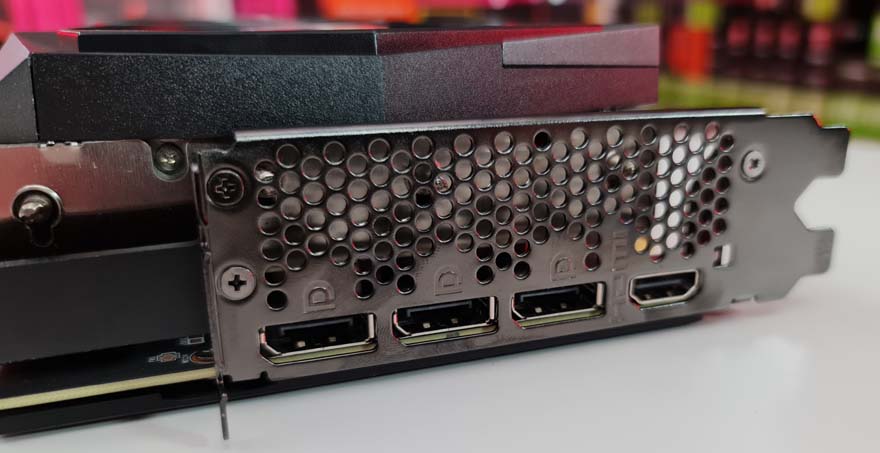
As for RGB, you’ll find three stripes that cut through the middle fan, offering a nice touch of colour to the card’s face.

It’s all fully customisable through software, or you can leave the default rainbow cycle to do its thing.
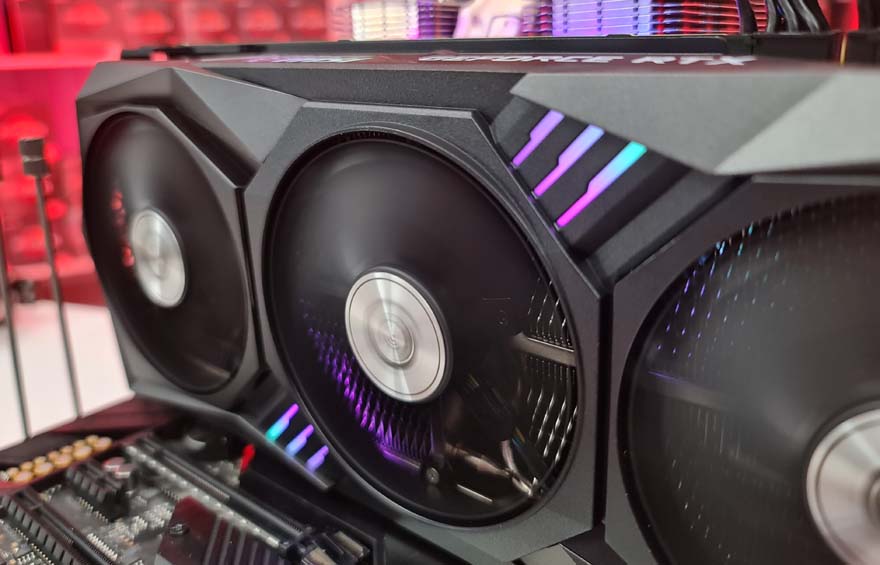
There’s also a strip of light on the edge of the backplate, as well as a bit more lighting on the MSI logo on the side of the card.
